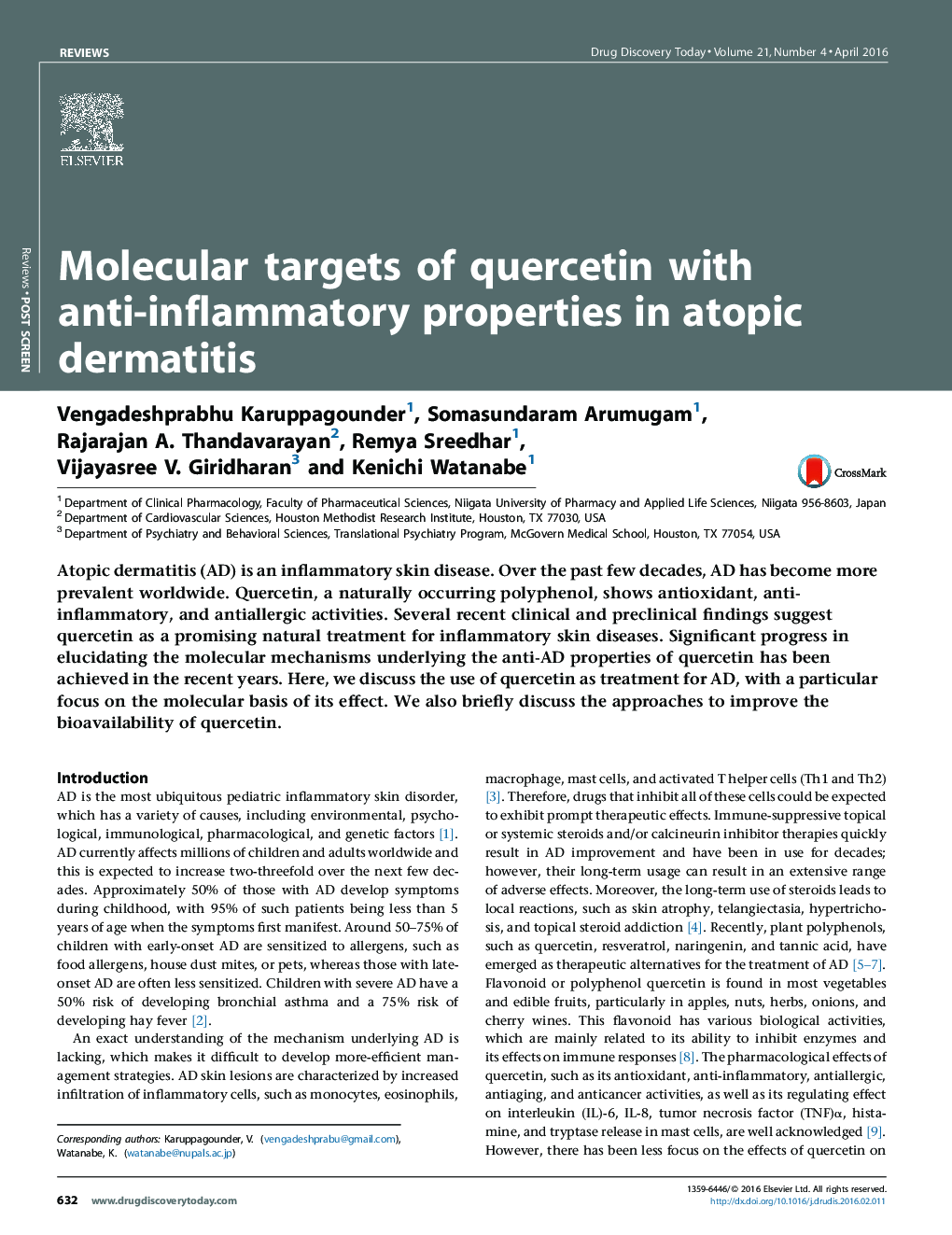| Article ID | Journal | Published Year | Pages | File Type |
|---|---|---|---|---|
| 2079886 | Drug Discovery Today | 2016 | 8 Pages |
•Atopic dermatitis (AD) is a chronic inflammatory skin disease.•Multiple signaling pathways may combine to produce pathological changes in AD.•Quercetin is a potent pleiotropic molecule that regulates multiple pathways.•Quercetin bioavailability limits its usage in clinical settings.•Various approaches to improve quercetin pharmacokinetics are addressed.
Atopic dermatitis (AD) is an inflammatory skin disease. Over the past few decades, AD has become more prevalent worldwide. Quercetin, a naturally occurring polyphenol, shows antioxidant, anti-inflammatory, and antiallergic activities. Several recent clinical and preclinical findings suggest quercetin as a promising natural treatment for inflammatory skin diseases. Significant progress in elucidating the molecular mechanisms underlying the anti-AD properties of quercetin has been achieved in the recent years. Here, we discuss the use of quercetin as treatment for AD, with a particular focus on the molecular basis of its effect. We also briefly discuss the approaches to improve the bioavailability of quercetin.
